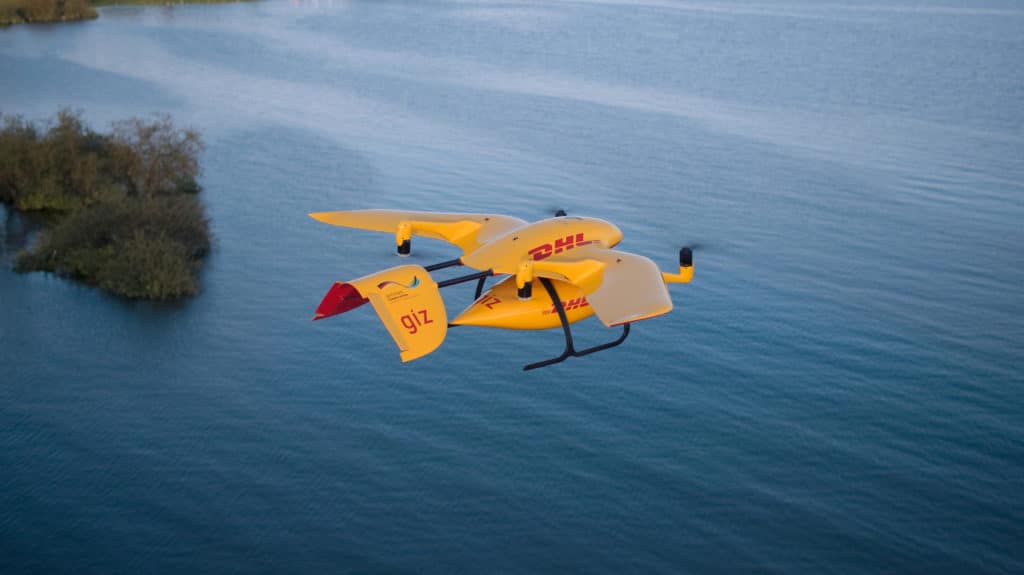Humans, as well as environmental factors have steadily decimated many ecological areas. This is a global issue. Fortunately, modern technology provides some assistance. Drones are one of the best tools to tackle this issue and restore the environment. We take a closer look at drones in environmental restoration.
The point of environmental restoration is to aid or enhance the recovery of disturbed ecosystems. Climate change, excessive grazing, fires, floods, hurricanes, logging, river damming, and various other factors disturb sensitive environments.
What Is Environmental Restoration, Reforestation, and Biodiversity?
At their basic level, these terms relate to restoring and preserving the natural ecosystem of an area. Reforestation refers to replanting trees in areas where the land has been depleted. This could be the result of fire, human deforestation, or other causes. Biodiversity encompasses all aspects of a particular ecosystem including plants, trees, fungi, and animals. All are essential for a healthy environment.
The process includes a detailed analysis of the environment, planting of seeds and seedlings, and ongoing monitoring and management of the site to ensure success. Fortunately, current technology makes the process faster, safer, less costly, and more effective. While other technologies such as data processing and AI assist, the one tool that makes these efforts fast and scalable is drone technology.
Traditional Methods of Conducting Restoration
As human development, housing, industry, and agriculture expand, natural grasslands, forests, and other areas are under threat. Many have been depleted and will take decades to recover, with significant effort and expense.
Most recent and current methods of ecological restoration rely on human intervention and effort. It is a slow, often dangerous, and expensive exercise. Restoring habitats to their original condition is not an easy task. Removal of rampant exotic plants and trees is needed, and the introduction of native vegetation is necessary. Plans need to be put in place to reduce deforestation, excessive grazing, and urban expansion.
The main current efforts in place include:
- Crop rotation
- Manually replanting trees and other indigenous plants
- The application of organic fertilizers and manure
- Water control and irrigation systems
How Drones Can Assist with Environmental Restoration
Despite the damage the world has done to the environment, current technology will help us address this issue. Drones or UAVs (unmanned aerial vehicles) are exceptional in many applications, including environmental restoration.
They can be used to map and monitor areas in potential distress. This feedback is critical for restoration efforts. You cannot fix the issue if you can not measure it. They are also able to navigate, measure, monitor, and video areas that would often be challenging using traditional methods.
Drones can efficiently cover large areas at a relatively low cost. They can measure weed issues, soil conditions, soil moisture, humidity, and weather patterns. They are fast and effective.
Additionally, modified drones can rapidly disperse seeds and seedlings to areas in need. They can do this faster and more efficiently than traditional methods. The cost is lower, the speed is significantly faster, and they can reach challenging terrain.
The Applications of Drones in Environmental Restoration
Drones offer multiple benefits for environmental restoration. When used correctly, often incorporating other current technology, they can deliver faster results at a lower cost.
Applications include:
- Mapping
- Analyzing the specific conditions
- Measuring climatic conditions, soil quality, and other significant factors
- Establishing the extent of alien invader plants and weeds
- Planning the most effective and efficient distribution of seeds
- Post-planting management and control
Last-mile delivery
Several studies comparing the environmental impact of various ‘last-mile’ delivery methods have proved that drones have a significantly lower environmental impact. They are additionally less expensive and faster than traditional methods such as human effort and diesel power,
Greenhouse gas is dramatically reduced by as much as 84%. Energy use is also significantly reduced.
Data collection to analyze land and growth factors
Before any attempts at environmental restoration are undertaken, accurate data is necessary. This will ensure that the efforts are effective and sustainable. Drones are adept and efficient at this task. Correctly designed, operated, and managed, they can deliver critical data, essential to the restoration project. This will ensure a greater success rate, reduce costs, and improve the speed of restoration.
Seed Dispersion
While drones offer a range of advantages in the restoration of damaged environments, one of their main benefits is the rapid dispersion of seeds and seedlings. Aerial dispersion of seeds is a cost-effective, practical, and fast way to achieve an improved environment.
It is significantly faster than traditional labor-intensive human methods. Drones are also capable of reaching areas that would be impossible or highly dangerous for humans to work in.
Aerial application of nutrients and water
It is all very well to disperse seeds however they generally need a bit of help to survive and thrive. Often water and nutrients are needed to ensure healthy growth and sustainable results. Drones that have been modified for this function can deliver both water and nutrients in a fast and cost-effective manner.
Herbicide dispersion
When the natural ecosystem is damaged or stressed, weeds and alien invader plants tend to take over. Drones can eradicate and control this situation. They can investigate and evaluate areas under stress and determine the most effective solution.
Additionally, they can deploy herbicides rapidly. In areas where water is required, drones can again be of assistance. These applications are particularly useful in dangerous or hard-to-reach areas.
Key Benefits of Drones in Environmental Restoration
One of the major benefits that drones provide this sector is reduced costs. Of course it’s not uncommon for new technology to increase efficiency, and reduce costs, however this case is quite different. The reason this sector hasn’t seen much growth prior to drones, is that it is expensive and there was no return on investment.
However, with a rapidly developing carbon market combined with the scalability and cost reductions from the drone industry…. There is a perfect overlap that investors are rushing to capitalize on.
This is why we are seeing such large technology companies enter this market, especially using drones.
It’s simple, if there’s money to be made, then there will be money thrown at it. Lucky for us, this money is being used to restore the planet. It’s a win-win baby! Someone gets rich, and we get to live another generation.
Other major benefits include:
- Enhanced data collection and analysis
- Improved efficiency and cost-effectiveness
- Remote sensing and monitoring capabilities
- Accessibility to challenging or hazardous areas
- Minimizing environmental impact and disturbance
Examples of Companies Using Drones in Environmental Restoration
Many companies and projects are currently employing drones for environmental restoration.
Here are a few of the main ones:
Mast Reforestation
Based in Seattle, Mast Reforestation employs a range of technologies to salvage areas that have been affected by the frequent devastating wildfires. Due to climate change, this is a growing problem and Mast Reforestation is making a significant impact in combating this issue.
They started in 2016, initially as DroneSeed and have grown steadily. Drones and unmanned aerial vehicles (UAVs) are just part of their solution.
A large part of the problem is a lack of seeds and seedlings. To this end, Mast runs two nurseries that produce in excess of 30 million seedlings annually and have the largest seed bank in the western US.
A large part of their success is based on carbon removal credits. This allows the operation to work at scale and reduce costs to landowners, foresters, and other parties affected by wildfires.
Mast Reforestation has received some of the largest investments in this sector. They’ve received upwards of $40M with the largest portion coming from their Series A in 2021.
Dendra Systems
Another significant company that is active in the field of environmental restoration is Dendra Systems. They too make use of multiple technologies to achieve ecosystem restoration. This includes AI, machine learning, in-depth soil and plant analysis and automated drone deployment. Incorporating these and other technologies allows for practical and affordable biodiversity solutions that can scale rapidly.
This video explains some aspects of what they do to restore biodiverse ecosystems. Their technology and systems allow for improved planning, accuracy, tracking, measurement, and reporting of all aspects of rehabilitation management.
The use of drones and UAVs dramatically reduces the time and cost of rehabilitation as well as reducing the risks.
AirSeed Technologies
AirSeed has a focus on biotechnology, with drones simply being the delivery mechanism for their proprietary seed pods. The company emphasizes the science of restoration, rather than the drones and hardware. Their proprietary seed pod technology has been developed over 5 years, and boosts the survival rate and growth potential of every seed.
Airseed uses AI to guide the process and customized drones to deliver quality viable seeds at a rate that is 25 times faster than traditional methods. Every stage of the process is planned with precision for maximum results. Their drones are capable of delivering a range of species and as many as 40,000 seeds pods per day.
This AirSeed video will give you more insight into their operation.
Conclusion
The drone industry has emerged as a powerful ally in the urgent and indispensable work of restoring the environment. Despite widespread environmental destruction, drones offer a glimmer of hope. It’s not just about assistance – they revolutionize the process, making it safer, more cost-effective, and faster. In fact, they’re the keys to rapid, sustainable recovery on a scale previously unimaginable.
The present accomplishments are inspiring, but what lies ahead is truly amazing. A lot of the brightest minds in our society are harnessing drone technology, driven by a common goal to fix our planet’s environmental wounds. They’re doing more than just being crucial – they’re reshaping conservation, one drone at a time. It’s true that the restoration of our environment is a grand orchestra, and drones are playing the sweetest symphony of hope and renewal.




